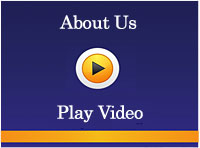The Seven Deadly Sins of Presenting…Are you committing them?
Welcome back,
Yesterday we covered the importance of having great eye control when presenting and we mastered the first of the 7 critical presentation techniques…Eye Control. Today we are going to be moving on to….
# Sin 2 – Hand control
Hands
Have you ever wondered what to do with your hands when you’re presenting? I have, and I’ve researched this extensively first-hand.
Most presenters I see have their hands:
- Clasped together, either in front of their bodies or behind their backs
- Arms simply crossed (defensive at best)
- Arms extended with fingers interlocking (marketing ‘pensive look’)
- Hands flat together (in a prayer-like position)
- One hand in the other (money in wallet look)
- Fingers pointing (very accusatory/ aggressive)
- In their pockets (usually men, as they have pockets in their trousers)
- Fiddling with pens, paper, glasses or laser pointer
All of these are very common. But how does this impact the viewer? Not great!
To demonstrate the impact I have recorded another short video which you can play below to show you what happens when a presenter is committing Sin 2.
[bitsontherun W0UiUYL7]
It is well known that the main reason (there are others) that people cross their arms, hands or fingers is to form a ‘barrier’ between themselves and the audience. Which makes the presenter feel a little better.
Unfortunately, it creates a negative impression. It looks ‘closed’, defensive, uninviting and generally unfriendly, ‘crossed-up’ and uncomfortable.
We also see other barriers being used; standing (hiding) behind a lectern, or flip chart, or standing behind a table when presenting. These are all forms of barriers to stop ourselves from being ‘exposed’ to the audience.
My advice (best practice) would be to stand as relaxed as possible, with your arms and hands ‘let go’ and loosely hanging by your sides. Release all the tension in your upper and lower arms, release your fingers, don’t stretch them or extend them out: equally, don’t form a clenched fist. Simply let your arms and hands ‘flop’ to your side.
Let me put it this way, lets imagine your director asked you to prepare for a very important presentation to all the senior managers and the board of directors. Your director has been extremely generous and has given you £10,000(€11,500) to buy a new suit for the occasion. You go to a very exclusive designer shop and try on many suits before you decide on a particular one that you think will be perfect.
Do this exercise right now. Imagine you are wearing this very expensive suit, you have several high quality floor-length mirrors in the room. You turn around several times, you adjust the collar and the cuffs. Now, you look directly into the mirror for a ‘final check’ before you offer your credit card.
Let me ask you this important question; how do you stand to look at yourself in the mirror? More specifically, where are your hands? And what are they doing?
The majority of people I have worked with over the last 15 years, say that their hands are relaxed, and gently down by their sides. When I ask them WHY they would stand like this in front of the mirror, they say “because I think I look best standing like this”.
Here’s the peculiar thing. Those same people who believe they look best standing like this, immediately cross their hands and or their fingers when standing in front of an audience! Yet, they know that it’s not their best look. Why?
Simple, because it’s more comfortable to put a ‘barrier’ between you and your audience. Don’t do it!
Relaxing your hands, and letting them flop gently by your sides when you present, is a very good look. It’s ‘open’, ‘honest’ and professional. It also allows you to gesture freely when appropriate. It may feel awful to begin with, but it will create a great impression. You will look very relaxed and very professional.
In summary; use your hands and gesture appropriately during presentations
- Describe or emphasize what you mean with your hands
- Hands should be used above the waist
- Gesture from the shoulder, not the elbow
- Use one-handed gestures when you can
- Always use an open palm (don’t point with your finger)
- Let your hands relax and fall to your sides (in the neutral position) after using them
You can see a demonstration of this critical step in action below:
[bitsontherun Ee8cDYMM]
Hand Control is the second critical step to becoming a confident and effective presenter. Tomorrow we will be looking at the third critical step so look out for tomorrow’s email.
Kind Regards

Laith
P.S. We would really value your feedback and opinion on how helpful you have found this critical step and how you feel it will help you in the future when you master this skill; therefore please take a moment to leave your comments below and if there are any other areas that you would like our help with in the future please do tell us and we will create another campaign to help you going forward.
[tfg_social_share]





it is importing to use videos. thank you again
Hi Roula,
Yes it is!
We often get feedback from 2 sources; 1. the facilitator (trainer) and 2. our peers or fellow participants. However, usually the most powerful feedback is from a third source; video. When our performance it is played back immediately and we for ourselves what we’re saying and doing – the verbal skills and physical behaviours. Thanks for your comments Roula!
Am finding this very helpful so far and having the video link helps. Thank you
Hi Dawn, you’re welcome, and thank you for the feedback. Yes, there is value in reading about these skills; seeing them demonstrated hopefully illustrates the skills further.
This is definitely very helpful. I see a lot of presenters here in UK fold their arms in front and look very ‘closed off’ or defensive.. I hope this information can be shared to a lot of presenters for them to understand what they do in front of the audience. Thanks for sharing.